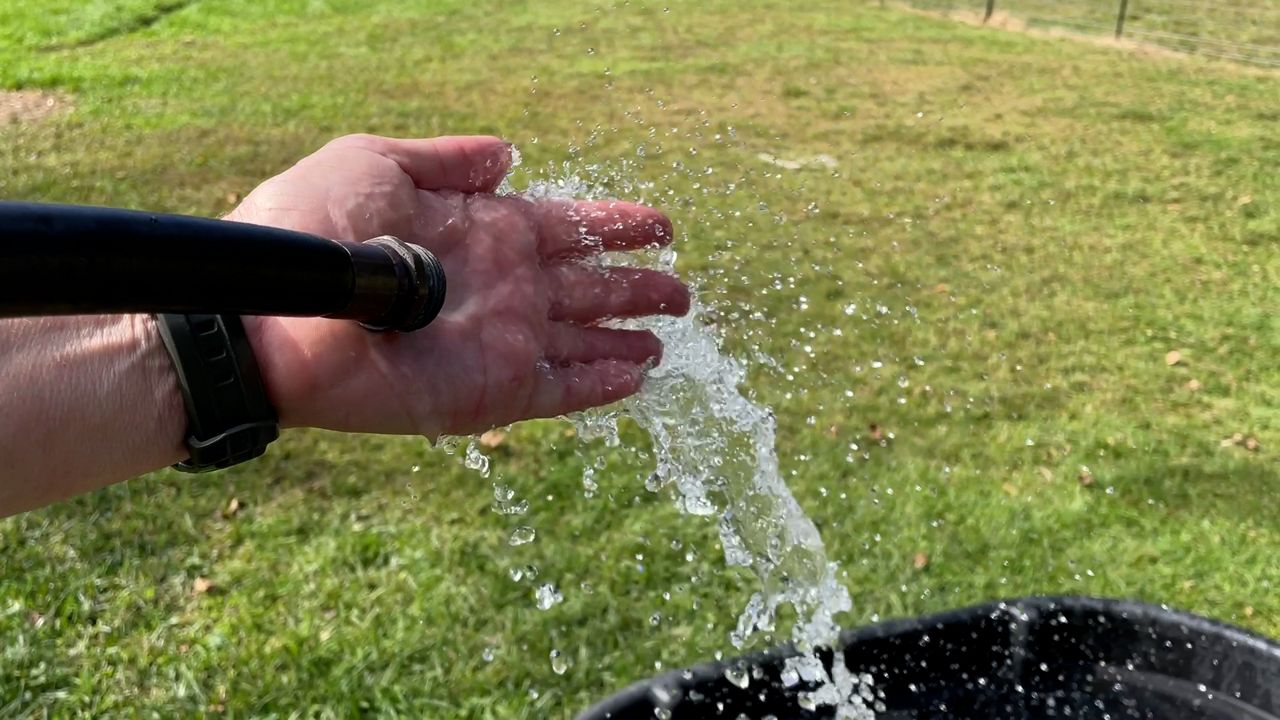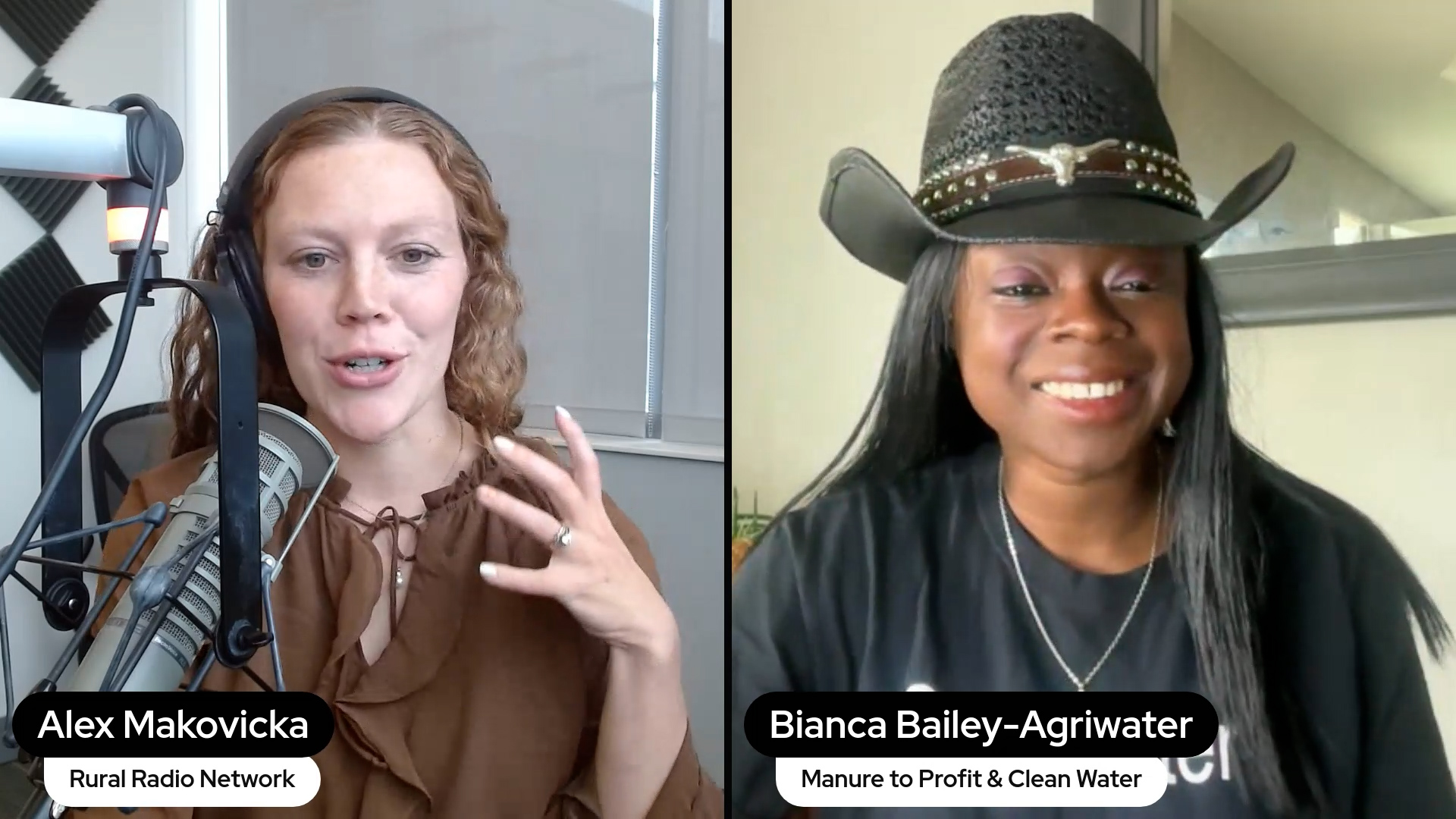September in Washington, DC: FY26 Appropriations, Shutdown, and Farm Bill – National Sustainable Agriculture Coalition

Report on United States FY2026 Agricultural Appropriations and Legislative Outlook
Executive Summary
This report analyzes the United States Congress’s legislative activities concerning agriculture, focusing on the Fiscal Year (FY) 2026 appropriations bills, the potential for a government shutdown, and the status of the Farm Bill. These legislative actions have significant implications for the nation’s progress toward several Sustainable Development Goals (SDGs), including SDG 2 (Zero Hunger), SDG 10 (Reduced Inequalities), SDG 12 (Responsible Consumption and Production), and SDG 15 (Life on Land). The recent passage of the One Big Beautiful Bill Act (OBBB), which reduced nutrition assistance and redirected funds to large-scale farm subsidies, has created a challenging environment for advancing a comprehensive and equitable food and agriculture policy aligned with these global goals.
Analysis of FY2026 Agricultural Appropriations
The House and Senate have proposed divergent funding levels for FY2026, reflecting differing priorities for sustainable development. The Senate bill allocates over $27 billion, maintaining funding for key programs, while the House bill proposes $25.5 billion, entailing significant cuts and including policy riders that could impede progress on SDG 10 (Reduced Inequalities) and SDG 16 (Peace, Justice and Strong Institutions).
- Senate Proposal: Allocates $27 billion, maintaining stable funding for programs supporting sustainable agriculture.
- House Proposal: Allocates $25.5 billion, reducing funds for critical programs. It includes policy riders to:
- Prevent the implementation of rules promoting fair competition for livestock farmers, impacting SDG 8 (Decent Work and Economic Growth).
- Block funding for initiatives related to Executive Order 13985, which aims to advance racial equity and support for underserved communities, directly undermining SDG 10.
Conservation, Energy, and Environment: Aligning with SDG 13 and SDG 15
Funding for conservation programs, essential for achieving SDG 13 (Climate Action) and SDG 15 (Life on Land), is a major point of contention.
- Conservation Technical Assistance (CTA):
- The Senate bill provides $895.75 million for Conservation Operations, with $775.495 million for CTA, supporting on-the-ground technical expertise for sustainable land management.
- The House bill cuts Conservation Operations to $850 million and CTA to $705 million, a reduction that would limit farmers’ access to resources needed to implement climate-resilient practices.
- Grazing Lands Conservation Initiative (GLCI):
- The Senate maintains $10 million for GLCI, a program that promotes sustainable grazing techniques crucial for soil health and biodiversity (SDG 15).
- The House bill proposes zero funding for GLCI, threatening a key initiative that supports sustainable livestock systems.
Research and Organics: Fostering SDG 12
Investment in sustainable and organic research is critical for advancing SDG 12 (Responsible Consumption and Production). The proposed budgets show differing levels of commitment.
- Sustainable Agriculture Research and Education (SARE):
- The Senate proposes $48 million, level with FY24 but below the FY23 level of $50 million. This funding level is insufficient to meet demand, with less than 40% of Farmer Rancher Grant proposals funded in 2022-2023.
- The House proposes a significant cut to $40 million, further constraining research into resilient agricultural systems.
- Organic Research:
- Both bills provide level funding of $7.5 million for the Organic Transitions Program (ORG) and no new discretionary funding for the Organic Agriculture Research and Extension Initiative (OREI).
- Report language in both chambers encourages prioritizing organic research, acknowledging its role in meeting consumer demand and promoting sustainable production.
- Farming Opportunities Training and Outreach (FOTO):
- Neither bill provides additional discretionary funding for FOTO, which supports beginning and socially disadvantaged farmers. This lack of investment hinders progress on SDG 10 (Reduced Inequalities) by limiting access to resources for marginalized agricultural communities.
Local and Regional Food Systems: Supporting SDG 2 and SDG 11
Support for local food systems is vital for achieving SDG 2 (Zero Hunger) and SDG 11 (Sustainable Cities and Communities). Funding proposals for key programs vary significantly.
- Local Agriculture Market Program (LAMP):
- Both bills provide $7.4 million for the Farmers Market and Local Food Promotion Program (FMLFPP).
- For the Value-Added Producer Grant (VAPG) program, which helps farmers increase their income, the Senate proposes $11.5 million while the House proposes only $5 million. This cut would harm rural economic development (SDG 8).
- Office of Urban Agriculture and Innovative Production (OUAIP):
- Funding for this office, which strengthens community food security, remains well below its authorized level of $25 million.
- The Senate proposes $6 million, a decrease from previous years.
- The House proposes only $4 million.
- These insufficient levels limit the program’s ability to address food access in urban and suburban areas, impacting SDG 2.
Legislative and Operational Challenges
Risk of Government Shutdown: A Threat to SDG 16
A failure to pass appropriations by September 30 would trigger a government shutdown, severely disrupting the USDA’s ability to serve agricultural stakeholders. This institutional instability undermines SDG 16 (Peace, Justice and Strong Institutions).
- A shutdown would halt non-essential programs and close local Farm Service Agency and Natural Resources Conservation Service offices.
- This closure would delay assistance to farmers, particularly impacting those reliant on USDA programs for conservation, credit, and technical support, thereby impeding progress on multiple SDGs.
Farm Bill Stalemate: Implications for Long-Term Sustainable Development
The failure to pass a comprehensive Farm Bill since 2018, compounded by the passage of the OBBB, creates profound uncertainty for the U.S. food and farm system. The OBBB’s deep cuts to the Supplemental Nutrition Assistance Program (SNAP) and reallocation of funds to large farm subsidies represent a significant setback for SDG 2 (Zero Hunger) and SDG 10 (Reduced Inequalities).
- There is no clear path forward for a bipartisan Farm Bill that could holistically address food security, rural development, and environmental stewardship.
- An extension of the 2018 Farm Bill is necessary to prevent the lapse of critical programs.
- A future Farm Bill must realign U.S. agricultural policy with the SDGs by supporting family farmers, addressing food insecurity, and promoting sustainable production systems.
Analysis of Sustainable Development Goals in the Article
1. Which SDGs are addressed or connected to the issues highlighted in the article?
- SDG 1: No Poverty
- SDG 2: Zero Hunger
- SDG 8: Decent Work and Economic Growth
- SDG 10: Reduced Inequalities
- SDG 11: Sustainable Cities and Communities
- SDG 12: Responsible Consumption and Production
- SDG 13: Climate Action
- SDG 15: Life on Land
- SDG 16: Peace, Justice, and Strong Institutions
2. What specific targets under those SDGs can be identified based on the article’s content?
-
SDG 2: Zero Hunger
- Target 2.1: End hunger and ensure access by all people, in particular the poor and people in vulnerable situations, including infants, to safe, nutritious and sufficient food all year round.
The article directly addresses this target by discussing the “One Big Beautiful Bill Act,” which “slashed SNAP benefits by nearly $186 billion.” SNAP (Supplemental Nutrition Assistance Program) is a key federal program for ensuring food access for low-income individuals and families. Reducing its funding directly impacts this target. - Target 2.3: Double the agricultural productivity and incomes of small-scale food producers, in particular women, indigenous peoples, family farmers, pastoralists and fishers, including through secure and equal access to land, other productive resources and inputs, knowledge, financial services, markets and value-added opportunities.
This target is relevant to the discussion of various USDA programs. The article highlights how the OBBB Act reinvested funds to “increase farm subsidies to the largest, wealthiest farmers, while programs that support the vast majority of farmers and rural communities were excluded.” Conversely, programs like the Value-Added Producer Grant Program (VAPG), the Beginning Farmer and Rancher Development Program, and the Outreach and Assistance for Socially Disadvantaged Farmers and Ranchers (Sec. 2501) are designed to support smaller-scale and new producers, directly aligning with this target. The proposed funding cuts to VAPG in the House bill would negatively impact this goal. - Target 2.4: By 2030, ensure sustainable food production systems and implement resilient agricultural practices that increase productivity and production, that help maintain ecosystems, that strengthen capacity for adaptation to climate change, extreme weather, drought, flooding and other disasters and that progressively improve land and soil quality.
The article extensively covers this target through its analysis of funding for conservation and sustainable agriculture programs. The Senate’s emphasis on “building agricultural resilience” through research, and funding for the Sustainable Agriculture Research and Education Program (SARE), which works on “soil health through cutting edge research, education, and extension on cover crops, diversified rotations, and managed grazing,” are direct examples. The Grazing Lands Conservation Initiative (GLCI) and Conservation Technical Assistance (CTA) also contribute to implementing resilient and sustainable practices.
- Target 2.1: End hunger and ensure access by all people, in particular the poor and people in vulnerable situations, including infants, to safe, nutritious and sufficient food all year round.
-
SDG 10: Reduced Inequalities
- Target 10.2: By 2030, empower and promote the social, economic and political inclusion of all, irrespective of age, sex, disability, race, colour, ethnicity, origin, religion or economic or other status.
The article highlights policy debates directly related to this target. It mentions that the House bill “prevents any funding for efforts related to Executive Order 13985, which seeks to advance racial equity and support for underserved communities through the USDA.” This is a direct challenge to promoting inclusion. Furthermore, the article discusses the Farming Opportunities Training and Outreach Grant Program (FOTO), which includes the “Outreach and Assistance for Socially Disadvantaged Farmers and Ranchers (Sec. 2501),” a program specifically designed to support this target.
- Target 10.2: By 2030, empower and promote the social, economic and political inclusion of all, irrespective of age, sex, disability, race, colour, ethnicity, origin, religion or economic or other status.
-
SDG 11: Sustainable Cities and Communities
- Target 11.a: Support positive economic, social and environmental links between urban, peri-urban and rural areas by strengthening national and regional development planning.
This target is addressed through the discussion of local and regional food systems. The article mentions the Local Agriculture Market Program (LAMP) and the Office of Urban Agriculture and Innovative Production (OUAIP) as programs that address “community food security through local producer networks in urban, suburban, and rural communities.” These programs work to strengthen the links between food producers and consumers, regardless of their location, fostering more resilient and integrated community food systems.
- Target 11.a: Support positive economic, social and environmental links between urban, peri-urban and rural areas by strengthening national and regional development planning.
-
SDG 15: Life on Land
- Target 15.3: By 2030, combat desertification, restore degraded land and soil, including land affected by desertification, drought and floods, and strive to achieve a land degradation-neutral world.
The article connects to this target through its focus on conservation and soil health. The Senate report language on the SARE program is quoted, appreciating its “work… to improve soil health.” Funding for the Natural Resources Conservation Service (NRCS) Conservation Operations account, which supports the Conservation Technical Assistance (CTA) program, is crucial for providing farmers with the expertise needed to implement practices that restore and maintain soil quality.
- Target 15.3: By 2030, combat desertification, restore degraded land and soil, including land affected by desertification, drought and floods, and strive to achieve a land degradation-neutral world.
-
SDG 16: Peace, Justice, and Strong Institutions
- Target 16.6: Develop effective, accountable and transparent institutions at all levels.
The entire article is a commentary on the effectiveness and accountability of governmental institutions. The discussion of the congressional appropriations process, the failure to pass a comprehensive farm bill for years, and the significant risk of a “government shutdown” all point to challenges in institutional effectiveness. The article also mentions an amendment that would have required the USDA to collect “public input from stakeholders on the reorganization” and make a “benefit-cost analysis” public, which speaks directly to the principles of transparent and accountable governance.
- Target 16.6: Develop effective, accountable and transparent institutions at all levels.
3. Are there any indicators mentioned or implied in the article that can be used to measure progress towards the identified targets?
-
Financial Investment and Budget Allocation
- Indicator: Annual funding levels for specific agricultural programs.
The article provides numerous specific figures that serve as direct indicators of government priorities and investment. Examples include the proposed Senate funding of $48 million for SARE versus the House’s $40 million; the Senate’s $895.75 million for Conservation Operations versus the House’s $850 million; and the Senate’s $10 million for GLCI versus the House’s proposal to zero-out funding. These figures measure the financial commitment to sustainable agriculture, conservation, and research. - Indicator: Total budget changes for major assistance programs.
The article states that SNAP benefits were “slashed… by nearly $186 billion” while farm subsidies were increased by “$50 billion.” These large-scale figures are powerful indicators of policy shifts affecting food security (SDG 2.1) and inequality (SDG 10).
- Indicator: Annual funding levels for specific agricultural programs.
-
Program Demand and Accessibility
- Indicator: Percentage of grant proposals funded.
The article explicitly states that for the SARE Farmer Rancher Grant, “less than 40% of… proposals were able to receive funding between 2022-2023.” This is a clear quantitative indicator of the gap between the demand for sustainable agriculture support and the available resources. - Indicator: Number of program applicants.
It is mentioned that for the Value-Added Producer Grant Program (VAPG), “the number of applicants nearly doubled” after a process change. This indicates the program’s popularity and reach among farmers, serving as a measure of its relevance to Target 2.3.
- Indicator: Percentage of grant proposals funded.
-
Program Participation and Reach
- Indicator: Number of farmers and stakeholders participating in programs.
The article notes that in Maryland alone, “over 7,000 farmers have participated in SARE since 2020.” This is a direct indicator of a program’s engagement and impact at a local level. - Indicator: Total investment and number of projects funded by a program.
The article states that the Office of Urban Agriculture and Innovative Production (OUAIP) “has invested over $85 million in 199 grants and 146 cooperative agreements.” This data measures the program’s output and its contribution to local food systems (SDG 11.a).
- Indicator: Number of farmers and stakeholders participating in programs.
-
Institutional Functioning
- Indicator: Timely passage of appropriations bills and farm bills.
The article’s focus on the September 30 deadline to fund the government and the fact that Congress is “nearly 7 years removed from passing a full farm bill” are implicit indicators of institutional effectiveness (or lack thereof) under SDG 16.6. A government shutdown would be a definitive negative indicator.
- Indicator: Timely passage of appropriations bills and farm bills.
4. Create a table with three columns titled ‘SDGs, Targets and Indicators” to present the findings from analyzing the article.
| SDGs | Targets | Indicators |
|---|---|---|
| SDG 2: Zero Hunger |
2.1: End hunger and ensure access to food.
2.3: Increase incomes of small-scale food producers. 2.4: Ensure sustainable food production systems. |
– Change in funding for SNAP (slashed by $186 billion). – Funding levels for VAPG, FOTO, and SARE. – Number of applicants for VAPG (nearly doubled). – Percentage of SARE grant proposals funded (less than 40%). – Funding levels for Conservation Operations, CTA, GLCI, and organic research programs (OREI, ORG). |
| SDG 10: Reduced Inequalities | 10.2: Promote social, economic, and political inclusion. |
– Inclusion/exclusion of funding for Executive Order 13985 on racial equity. – Funding for Outreach and Assistance for Socially Disadvantaged Farmers and Ranchers (Sec. 2501). – Disparity in subsidies between largest, wealthiest farmers and the “vast majority of farmers.” |
| SDG 11: Sustainable Cities and Communities | 11.a: Support links between urban, peri-urban and rural areas. |
– Funding levels for the Office of Urban Agriculture and Innovative Production (OUAIP) ($6M Senate vs. $4M House). – Total investment by OUAIP ($85 million in 199 grants). – Funding for the Local Agriculture Market Program (LAMP). |
| SDG 15: Life on Land | 15.3: Restore degraded land and soil. |
– Funding for Conservation Technical Assistance (CTA) to support soil health practices. – Funding for SARE, specifically for its work on soil health, cover crops, and managed grazing. |
| SDG 16: Peace, Justice, and Strong Institutions | 16.6: Develop effective, accountable, and transparent institutions. |
– Occurrence of a government shutdown. – Years since last full farm bill was passed (nearly 7 years). – Requirement of public input and cost-benefit analysis for USDA reorganization (amendment failed). |
Source: sustainableagriculture.net

What is Your Reaction?
 Like
0
Like
0
 Dislike
0
Dislike
0
 Love
0
Love
0
 Funny
0
Funny
0
 Angry
0
Angry
0
 Sad
0
Sad
0
 Wow
0
Wow
0














































.jpg.webp?itok=0ZsAnae9#)







:focal(1500,1000)/https://media.globalcitizen.org/a6/9a/a69a4720-d8a1-4715-b596-18738d03c05c/rotary_polio_hero_image.jpg?#)

/countries/sri-lanka/photo-credit---dmc-sri-lanka.tmb-1200v.jpg?sfvrsn=dc298bcc_1#)


















